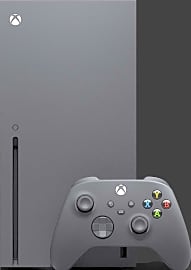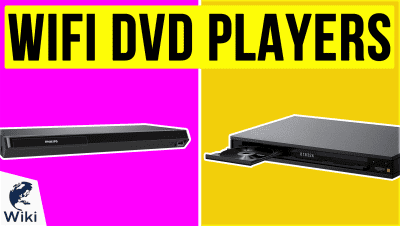The 8 Best Blu Ray Players

This wiki has been updated 38 times since it was first published in May of 2015. If you and your family enjoy watching movies regularly in the comfort of your own home, take a look at these Blu-ray players. They can provide stunning visuals, crystal-clear audio, and streaming video support, allowing you to replicate a cinema experience without the high ticket and popcorn prices. Most offer 4K disc playback as well as wireless connectivity for online streaming. When users buy our independently chosen editorial selections, we may earn commissions to help fund the Wiki.
Editor's Notes
January 06, 2021:
While 4K Blu-rays are still pretty popular, there aren't as many options available for playing them. We've removed some from Oppo, Sanyo, and Samsung, because as their availability drops, they start to cost far more than they're worth.
The remaining models, however, do a better job than almost all older options. The Sony UBP-X700, for example, does an even better job of handling color and dynamic contrast than its more expensive relative the Sony UBP-X800M2, and if you want the best of both worlds and can afford the investment, the Sony UBP-X1100ES should perform at least as well as both other Sony models.
December 13, 2019:
Physical disc media is far from dead; in fact, if you want a true 4K cinematic experience, for a lot of films, a 4K Blu-ray is the only way to go. If you actually aren't interested in Ultra HD playback, check out the LG BP175, which is relatively affordable and backwards compatible with DVDs and CDs, to help take advantage of your entire collection. Alternately, the Sanyo 8MYS is one of the least expensive with UHD support, although it doesn't have particularly high-end audio processing. The Samsung UBD-M8500 improves not only upon the audio side of things but also in connectivity; its integrated wireless modem makes it easy to access streaming services. The Sony UBP-X800M2 also has built-in Wi-Fi, and though it is a bit more costly, it's also more refined. Rounding out our mid-range selections is the LG UBK90, which comes from one the most respected panel and hardware manufacturers on the planet, but like others in its price range, lacks audiophile-level sound.
Clear on the other side of the spectrum, there are a handful of high-end options that you should consider if you're intent on setting up a world-class home theater system. The Pioneer Elite UDP-LX500 is all that most people need, which it had better be, given its high price tag. If you're absolutely serious about audio quality, the Cambridge Audio CXUHD and Oppo UDP-203 are worth a look, as they're packed with costly and powerful components, but they will both set you back quite a pretty penny.
Then there are two devices located right in between those two main groups on the price spectrum. The Xbox One X can provide an incredibly wide-ranging entertainment experience including some of the most fun console games on the market. If you're not interested in joining the Microsoft Xbox ecosystem, the Panasonic UB820 is one of the best 4K Blu-ray players that doesn't cost a fortune. Its output looks and sounds nearly as good as those of the more expensive units but you won't have instant buyer's remorse over the cost.
Nostalgia, Evolution, And True Clarity
Though the evolution from VHS to DVD format was a big step, there was still something missing.
Entertainment technology has come a long way in a very short period of time. At one point, it seemed as though the days of the Video Home System (VHS) format would never end. VHS tapes still offer nostalgia for those familiar with the eighties and nineties, even before the Digital Video Disc (DVD) player became common. As an example, I can still remember that faithfully-anticipated day when one of my favorite animated films, The Lion King, was finally released to home video. Rushing to my local Sam Goody, I remember purchasing 2 VHS copies sealed in that familiar shrink wrap and I couldn't wait to get home and pop the tape into my video cassette recorder (VCR). A VHS tape was the most familiar and popular form of home video media through at least the mid-nineties.
The evolution from VHS to DVD was like a revolution to many with the main differences between the two formats being the change in physical media storage and the fact that DVDs didn't stretch or wear out over time like tapes do. DVD players became extremely common by the early twenty-first century and hit their peak of popularity by 2003.
Though the evolution from VHS to DVD format was a big step, there was still something missing. While video could be archived on an optical disc without degrading in quality, high-definition media also began to permeate into the consumer market. Television stations began broadcasting content in crystal clear 1080p resolution, the IMAX theater released highly-anticipated films on huge screens and in high-definition quality, so it seemed only natural that consumers would want the opportunity to own and watch their favorite films and television shows in full high-definition splendor without any loss in video quality. It was inevitable that the next logical step following the DVD player was a disc format capable of storing high-definition audio and video content for consumption at home on a Blu-ray player.
On April 10, 2003, Sony Corporation released their first home consumer Blu-ray player, the BDZ-S77. This device was only released in Japan with the underlying problem being that there was no established standard for prerecorded Blu-ray video, nor were there any Blu-ray discs released for playback on the device.
The first consumer-accessible Blu-ray player was the Samsung BDP-1000, which began shipping in mid-June 2006 amidst the battle with the rival HD DVD format developed by Toshiba. Today, Blu-ray players are available from many of the major home electronics manufacturers and have come down in price considerably so that a large majority of consumers can enjoy the format.
The Benefits Of A Blu-ray Player
Blu-ray technology was developed by a group of electronics manufacturers. Its name comes from the use of a blue-violet laser diode with a wavelength that is shorter than the red laser diode used to read standard DVD media. The blue-violet laser inside a Blu-ray player allows the Blu-ray disc to contain a much larger amount of data than a DVD can store and with a much higher picture resolution, which is why watching one (especially a modern film) is like watching the actors through a crystal clear window.
A standard DVD holds up to 4.7 gigabytes of data, whereas a Blu-ray disc can hold up to 25 gigabytes.
The violet laser's shorter wavelength can focus on a small area of a Blu-ray disc. In so doing, this laser reads a disc's information in pits that are significantly smaller in scale and more closely packed together than those on a DVD, which ultimately increases the volume of information that can be stored on the Blu-ray disc. A standard DVD holds up to 4.7 gigabytes of data, whereas a Blu-ray disc can hold up to 25 gigabytes. Dual-layered Blu-ray discs hold up to 50 gigabytes of data.
A Blu-ray player is a backwards-compatible device that can read both Blu-ray and DVD optical media. Many Blu-ray players today not only take advantage of the high-resolution video stored on a Blu-ray disc, but they also offer a wide range of internet connectivity to video on demand streaming services so you can view high-definition media without actually having to play a disc. That being said, people still find comfort in owning physical media, so the disc format is not likely to disappear anytime soon.
Don't Be Blue, Get Blu
Thanks to Blu-ray's popularity, you don't have to work too hard to find an excellent-quality Blu-ray player at a competitive price. That said, there are a few things you'll want to be aware of when making your decision.
This capability is particularly useful if you don't have a lot of storage space for your Blu-ray discs and would rather stream most of your high-definition content instead.
Firstly, consider the kind of connectivity you'll need. If you can find a player with several High-Definition Multimedia Interface (HDMI) inputs and outputs, for example, it will be easy for you to connect multiple devices (i.e. televisions and smartphones). Many Blu-ray players can also be controlled by a mobile device using your home Wi-Fi network, which makes it easy to keep your player out of sight.
Streaming and wireless capabilities are important features for many. There are a variety of subscription video streaming services available to which a Blu-ray player can connect. This capability is particularly useful if you don't have a lot of storage space for your Blu-ray discs and would rather stream most of your high-definition content instead. One must be sure to check which services are available to the player before purchasing.
If you have a television capable of displaying three-dimensional content (3D), then definitely go for a Blu-ray player that supports the playback of 3D disc media.













